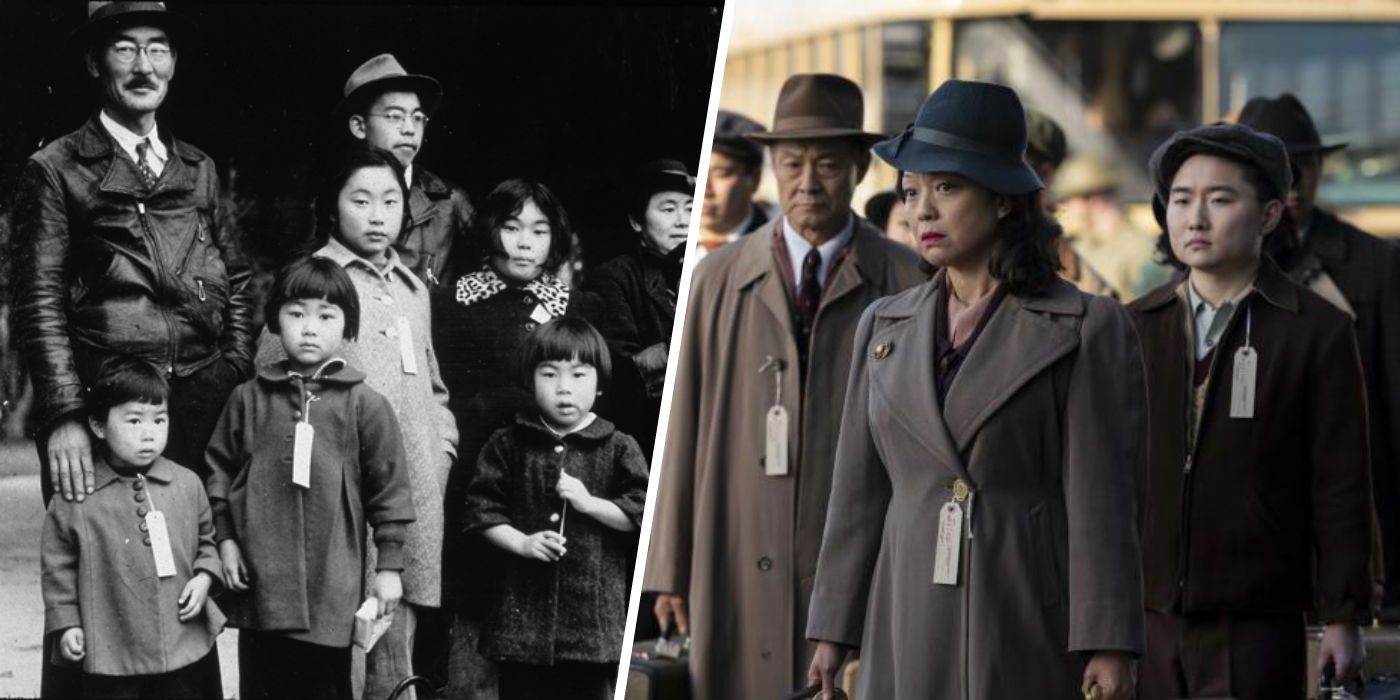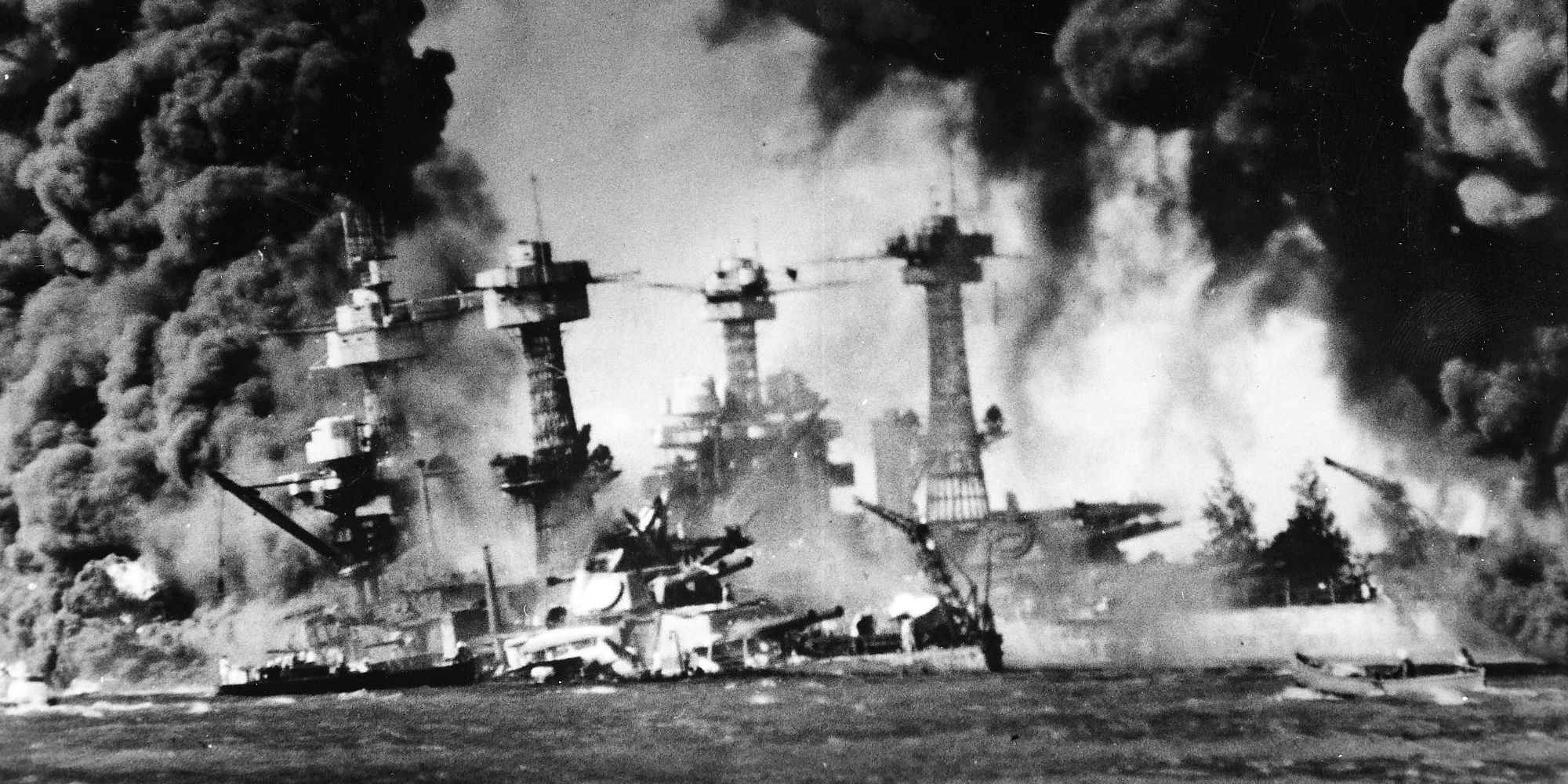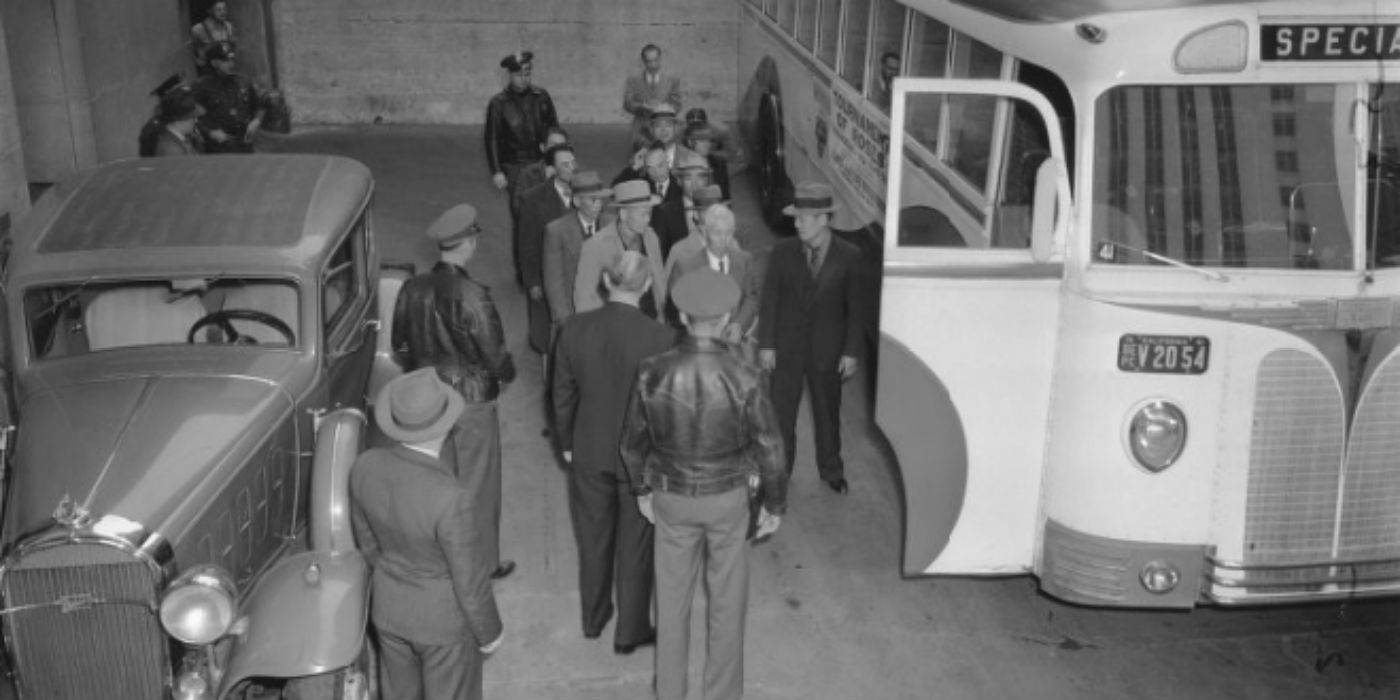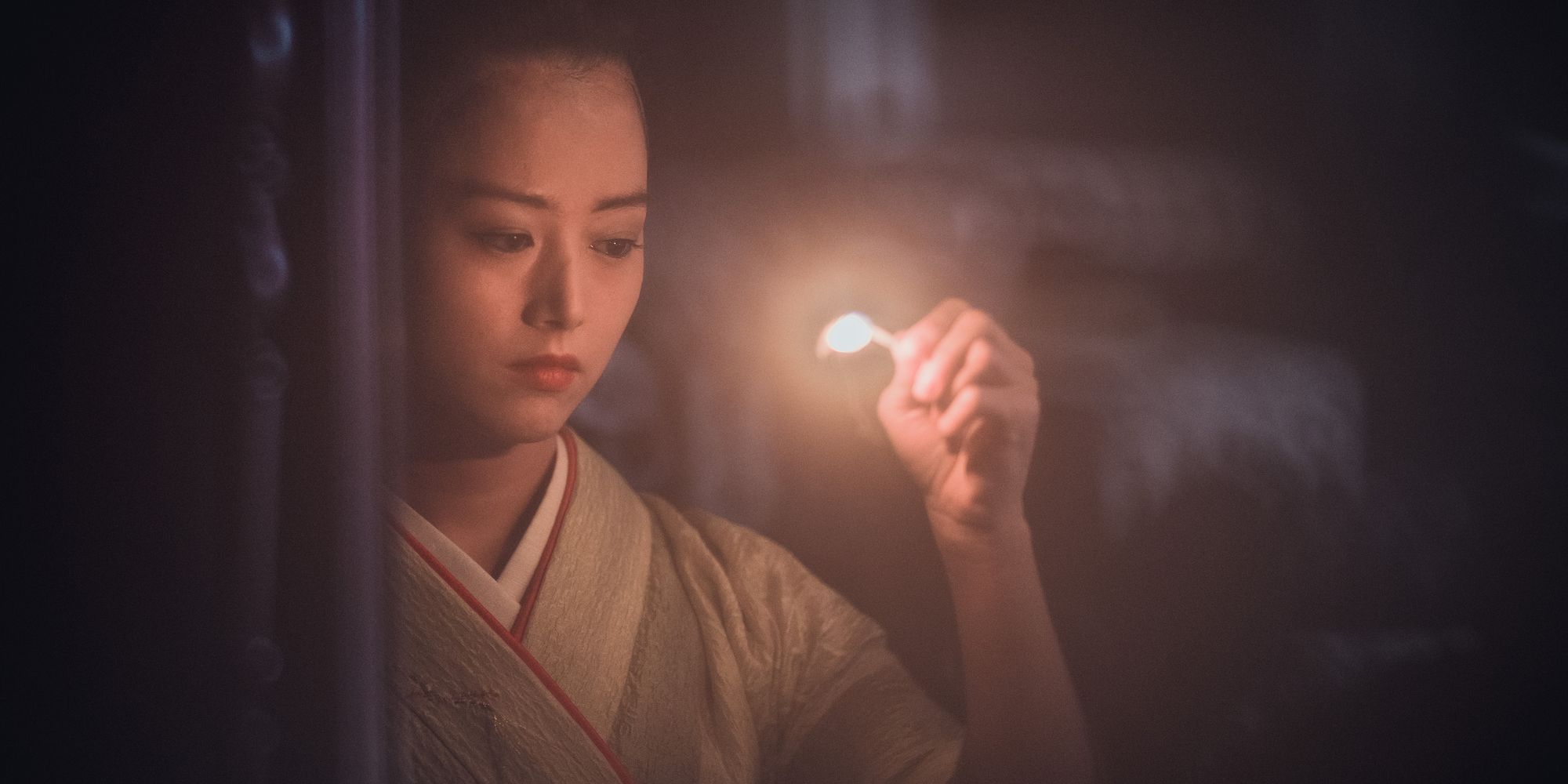The Terror: Infamy, the second season of AMC's historical horror anthology series, is based on the true story of Japanese American internment camps during World War II, and also draws on chilling Japanese folklore of ghosts and malevolent spirits. The show's title is taken from President Franklin D. Roosevelt's speech following the attack on Pearl Harbor, in which he describes December 7, 1941 as "a date that will live in infamy."
The story of The Terror: Infamy begins with a woman called Mrs. Furuya carefully getting made up in traditional Japanese clothing and make-up, then walking along a dock, her twitching strangely until she eventually collapses and then stabs herself in the ear with one of her hair sticks. At her funeral, a strong wind blows and knocks her coffin to the ground, causing her body to spill out of it. Things only get creepier from there, as the malevolent spirit on Terminal Island renders Mrs. Furuya's abusive husband blind, and causes a drunken cannery worker to fall into the water and drown.
Unlike the first season of The Terror, which was based on the arctic expedition of the HMS Erebus and HMS Terror and featured characters based on real people, the main collection of characters in The Terror: Infamy are wholly fictional. However, the historical events that take place in the show - from the attack on Pearl Harbor to Japanese Americans being relocated en masse to internment camps - are very real.
The Attack on Pearl Harbor
More than two years after the start of World War II, a surprise attack by Japanese forces pushed America to join the war. On the morning of December 7, 1941, hundreds of Japanese fighter planes flew over the U.S. naval base of Pearl Harbor in Hawaii, using bombs, torpedoes, and bullets to decimate U.S. battleships and aircraft. More than 2,400 Americans were killed in the attack, and many hundreds more were wounded. The attack was intended as a preemptive strike to weaken the United States Pacific Fleet and prevent interference with Japan's naval operations. It was also intended to coincide with Japan's official declaration of war on the United States - though in fact the message from Japan declaring an end to negotiations wasn't delivered until an hour after the attack on Pearl Harbor had already begun.
The following day, President Roosevelt delivered the famous "Infamy Speech," in which he asked Congress to declare that a state of war had existed between the United States and Japan since the attack on Pearl Harbor. His request was fulfilled by Congress within an hour of the speech, and within days the U.S. was formally at war not only with Japan, but also with its allies Germany and Italy. In his speech, Roosevelt pledged that "we will not only defend ourselves to the uttermost, but will make it very certain that this form of treachery shall never again endanger us. Hostilities exist. There is no blinking at the fact that our people, our territory and our interests are in grave danger." The Japanese Americans living in the United States at the time immediately fell victim to this wave of hyper-vigilance and anti-Japanese sentiment.
Japanese American Concentration Camps
As shown in the first episode of The Terror: Infamy, the reaction to Pearl Harbor was swift. Within hours, Japanese American men on Terminal Island were rounded up and forcibly evacuated, despite having nothing to do with the attack and there being no evidence against them. In the atmosphere of hysteria and racism following the shocking attack on the United States, Japanese Americans became a target because they were perceived as a threat - considered to be potential spies for the Japanese Empire. On February 18, 1942, Roosevelt signed Executive Order 9066, which gave the secretary of war power to designate certain areas as military zones, and to relocate any Japanese Americans, German Americans or Italian Americans living in those areas to concentration camps.
Related: The Terror: Infamy Review
The internment of Japanese Americans during World War II is still recent enough in history to have affected members of The Terror: Infamy's cast. George Takei, who plays Nobuhiro Yamato in the show, was held in one of the camps along with his family as a child. Speaking to CNN, showrunner Alexander Woo described Takei as the "spiritual leader" of the production, and explained that Takei's memories of his time in the internment camps informed events that take place in The Terror: Infamy, as well as many smaller details. Derek Mio, who plays Chester, is a fourth generation Japanese American whose great-grandparents lived on Terminal Island and were sent to the Manzanar internment camp. Overall, 138 relatives of The Terror: Infamy's cast and crew who were interned during the war.
The promo images and trailers for The Terror: Infamy have already revealed that Chester and his friends and family will eventually find themselves placed in camps alongside tens of thousands of other Japanese Americans - many of them American citizens, and some with as little as one-sixteenth Japanese heritage. However, departing from Terminal Island won't be enough to stop the spirits that are haunting them.
The Terror: Infamy's Japanese Ghosts & Folklore
Japanese ghost stories are referred to as kaidan, and the Comic-Con trailer for The Terror: Infamy mentioned two specific types of strange creatures that viewers can expect to see in the show. The first, bakemono, is a being that changes or shapeshifts between different forms, and is generally a living creature rather than a ghost. The second, yurei, is a spirit returning from beyond the grave to haunt either a place or a person. As with other ghostly folklore from around the world, yurei are generally ghosts who have been prevented from moving on to the afterlife because of unfinished business on earth, and can only be laid to rest either by receiving proper funeral rites and burial, or completing their unfinished business.
Yurei are traditionally portrayed as being dressed in a white kimono (traditional burial clothes) and having long, black, dishevelled hair - an image that will be familiar to any fans of Japanese horror films like The Ring or The Grudge. Based on The Terror: Infamy's first episode, it seems as though Yuko - the mysterious woman who reads Chester's tea leaves at the brothel - may be the show's resident yurei. She is seen walking past Mr. Furuya shortly before he goes blind, and when Chester tries to take her photo he finds that her face is strangely blurred. There's also a chilling glimpse of the yurei hidden in the background when Chester and Amy are walking along the dock - though it's unclear whether it's Mrs. Furuya, Yuko, or some other ghost that's following them.
With nine episodes to go, The Terror: Infamy is sure to dig a lot deeper into Japanese folklore and ghost story traditions, played against the grim background of America's own concentration camps in World War II.
More: The Terror: Infamy's Premiere Has a Creepy Hidden Ghost




